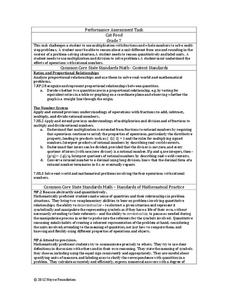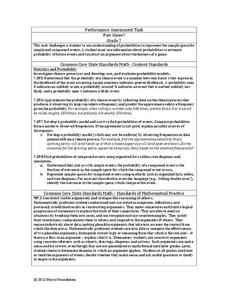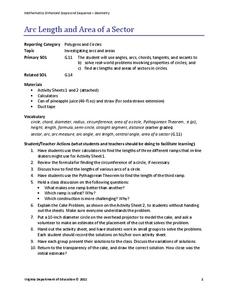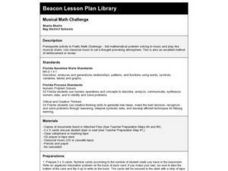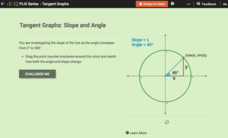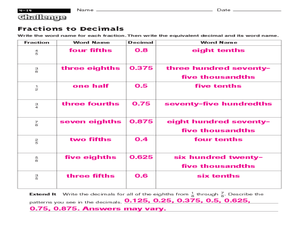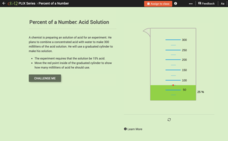EngageNY
Ferris Wheels—Using Trigonometric Functions to Model Cyclical Behavior
Have class members going in circles as they model the path of a Ferris Wheel using trigonometric functions. Building on the previous lesson in this series on transformations, learners use trigonometric functions to model wheels of...
Noyce Foundation
Cat Food
Determine the right mix of cans of cat food. The resource consists of an assessment task to determine the cost to feed two cats for a specific number of days and requires scholars to interpret remainders within a context. The resource...
Noyce Foundation
Fair Game?
The game should be fair at all costs. The mini-assessment revolves around the ability to use probabilities to determine whether a game is fair. Individuals determine compound events to calculate simple probabilities and make long-run...
EngageNY
Applications of Systems of Equations and Inequalities
Is the application of systems of equations giving your class headaches? Use this resource to build on your pupils' logic to lead them to building equations and using algebraic methods. The instructional activity begins with an...
EngageNY
Solving Problems in Two Ways—Rates and Algebra
Build confidence by using multiple approaches to problem solving! This resource uses a visual and algebraic approach to solving application problems. A discussion is included about efficient approaches to different problems.
Curated OER
Dividing by Negative Powers of Ten (B): Two-Digit Facts
In this math worksheet, students are given 10 numbers which they are to divide by 1, .1, .01, .001, and .0001. Once the procedure is understood, the answers are easy to find.
Curated OER
Geometry - Angles Overview
Learners address 14 questions that include naming all pairs of opposite and supplementary angles for sets of intersecting lines and then, finding the measure of the unknown angle. They determine the measure of the angle that is...
Curated OER
Number Sequences
Number sequences make for great challenges that stimulate pattern recognition, algebraic reasoning, and number sense. This slide-show includes eleven number sequences for learners to work through, an explanation of what number sequences...
Scholastic
Study Jams! Greatest Common Factor
When one method isn't enough to teach GCF, try two! This interactive webpage introduces factors and the prime factor tree to find the greatest common factor of two numbers. After the lesson, have learners click to try the two examples...
Scholastic
Study Jams! Add & Subtract with Unlike Denominators
Your bakers might not realize that they need to know how to add with unlike denominators in order to figure out how much milk they need for a recipe. In order to make brownies and cookies, this lesson teaches how to find a common...
Scholastic
Study Jams! Finding a Fraction of a Set
Finding a fraction of a number is just multiplication in disguise. Young mathematicians can interact with this lesson to practice using multiplication to find a percent of a whole number. The narrator goes over how to put the number over...
Scholastic
Study Jams! Divisibility Rules
Learning division is a challenge for many young mathematicians, but this presentation on divisibility rules can make it much easier. Seven different rules are clearly explained and modeled with the support of multiple examples. Consider...
Virginia Department of Education
Arc Length and Area of a Sector
What do skateboarding and baked goods have in common with math? You can use them to connect half-pipe ramps and cakes to arcs and sectors. Pupils compare the lengths of three different ramp options of a skate park. They calculate the...
Curated OER
Rainy Day Blues Turned into Rainbow Smiles
A series of physical fitness games, activities, and teamwork challenges prompt youngsters to get moving! Using Hula Hoops, bean bags, pool noodles, and other materials, elementary and middle schoolers work together and get some exercise...
Math Flix
Countdown Challenge: Equivalent Expressions
Young mathematicians solve and complete eight different problems that include writing several equivalent expressions. They determine the number of tiles required to border around a square pool of the given dimensions. This terrific...
Curated OER
Musical Math Challenge
Fourth graders engage in a lesson in which problem solving is set to music - like musical chairs. They listen to classical music to set a thought-provoking atmosphere. This is also an excellent method of reinforcement or review.
Curated OER
Math Challenge: In Balance
In this balance worksheet, students match a set of items on a balance with in a left column with those in a right column that would make the balance even. Answers included on page 2.
CK-12 Foundation
Add and Subtract Three Mixed Numbers: Walking to School
Mixed numbers are the focus of a five-question interactive. Scholars move fraction pieces into strips and equations to find solutions. Questions challenge participants with multiple-choice, a true or false, and one discussion.
CK-12 Foundation
Tangent Graphs: Slope and Angle
Learning about tangents doesn't have to be a slippery slope. Pupils drag a point around a unit circle to see how angle affects the slope of a line. They individually answer a set of challenge questions to come to the conclusion that...
Curated OER
Challenge: Prime Numbers
In this exploring prime numbers worksheets, learners use the definition of prime numbers to solve 4 problems, then list prime and composite numbers from 2-18.
Curated OER
Challenge: Fractions to Decimals
In this fractions worksheet, pupils write the word name and decimal for each fraction given. They complete eight fraction to decimals problems.
Curated OER
Challenge: Graphing Functions
Here is a functions worksheet in which learners solve functions containing variables, graph the coordinates, and answer two questions about it. They complete 14 functions.
CK-12 Foundation
Percent of a Number: Acid Solution
Mathematicians answer five questions about percents, ratios, and proportions with help from an interactive graduated cylinder. Question types include multiple-choice, fill-in-the-blank, and discussion.
CK-12 Foundation
Exponent Properties with Variable Expressions: Size of Solar Tornadoes
Exponents may have your pupils' heads spinning after an engaging lesson as they connect properties to tornadoes! Learners compare a distance between cities to the distance across a solar tornado. They use exponent properties to find the...



